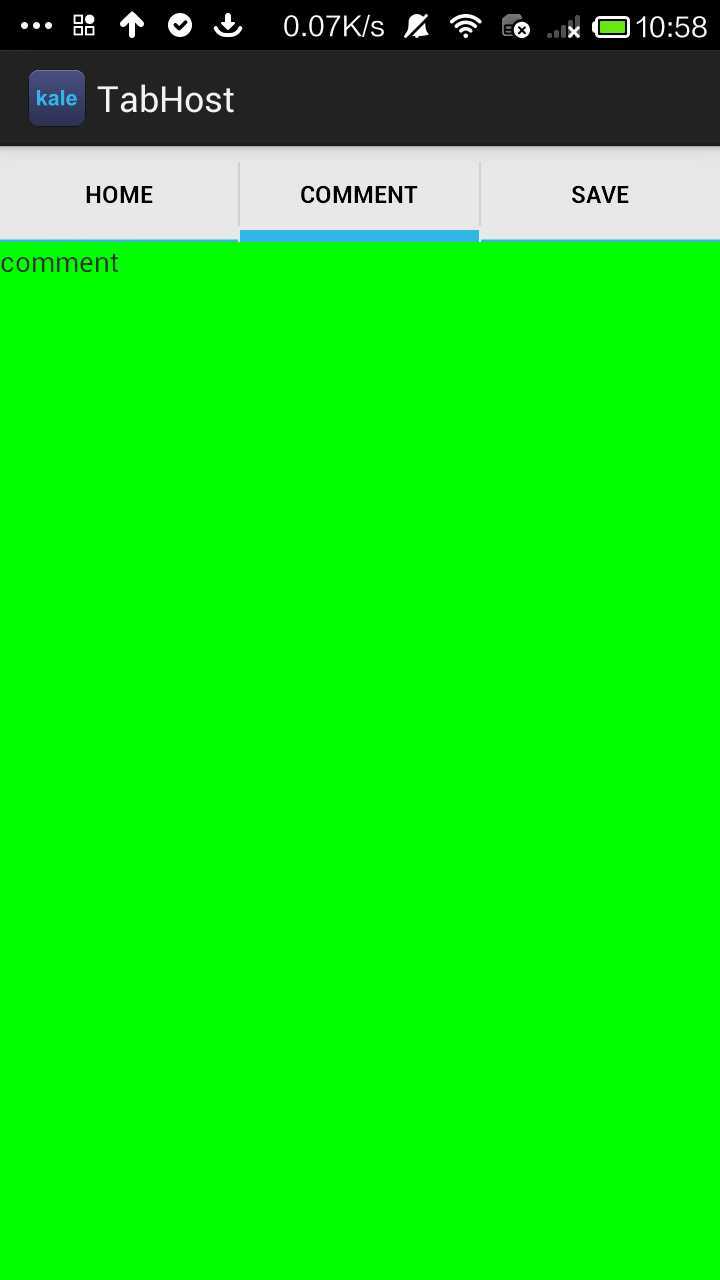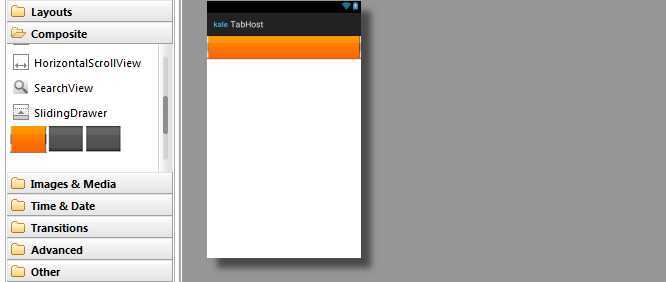标签:android style blog http java color

本文主要参考自:http://blog.csdn.net/wulianghuan/article/details/8588947 (里面有TabHost第二种定义的方式,继承TabActivity)
TabHost就是一个选项卡,类似于tab。这里我定义了三个标签,点击后会切换出不同的内容。之前用Fragment实现过类似的效果,总觉得还是Fragment+tab好用点。
activity_main.xml

<?xml version="1.0" encoding="utf-8"?> <LinearLayout xmlns:android="http://schemas.android.com/apk/res/android" android:layout_width="fill_parent" android:layout_height="fill_parent" android:orientation="vertical" > <TabHost android:id="@+id/tablehost" android:layout_width="fill_parent" android:layout_height="fill_parent" > <LinearLayout android:layout_width="fill_parent" android:layout_height="fill_parent" android:orientation="vertical" > <TabWidget android:id="@android:id/tabs" android:layout_width="fill_parent" android:layout_height="wrap_content" /> <FrameLayout android:id="@android:id/tabcontent" android:layout_width="fill_parent" android:layout_height="fill_parent" > </FrameLayout> </LinearLayout> </TabHost> </LinearLayout>
每个选项卡点击后的内容的布局。其实就是在上面定义的FrameLayout中的内容
home.xml
<?xml version="1.0" encoding="utf-8"?> <LinearLayout xmlns:android="http://schemas.android.com/apk/res/android" android:layout_width="match_parent" android:layout_height="fill_parent" android:background="#0000FF" android:id="@+id/home" android:orientation="vertical"> <TextView android:layout_width="fill_parent" android:layout_height="wrap_content" android:text="home" /> </LinearLayout>
comment.xml / save.xml布局和home一样。
下面是java代码——MainActivity.java
package com.example.tabhost; import android.app.Activity; import android.os.Bundle; import android.view.LayoutInflater; import android.widget.TabHost; import android.widget.TabHost.TabSpec; public class MainActivity extends Activity { @Override protected void onCreate(Bundle savedInstanceState) { super.onCreate(savedInstanceState); setContentView(R.layout.activity_main); //取得TabHost TabHost tabhost = (TabHost) findViewById(R.id.tablehost); tabhost.setup(); LayoutInflater inflater = LayoutInflater.from(this); //把配置文件转换为显示TabHost内容的FrameLayout中的层级 inflater.inflate(R.layout.home, tabhost.getTabContentView()); inflater.inflate(R.layout.comment, tabhost.getTabContentView()); inflater.inflate(R.layout.save, tabhost.getTabContentView()); //设置HOME标签 TabSpec spec1 = tabhost.newTabSpec("HOME"). setIndicator("HOME"); // setIndicator设置标题 //设置HOME模块显示内容 spec1.setContent(R.id.home); tabhost.addTab(spec1); TabSpec spec2 = tabhost.newTabSpec("COMMENT").setIndicator("COMMENT"); spec2.setContent(R.id.comment); tabhost.addTab(spec2); TabSpec spec3 = tabhost.newTabSpec("SAVE").setIndicator("SAVE"); spec3.setContent(R.id.save); tabhost.addTab(spec3); } }
标签:android style blog http java color
原文地址:http://www.cnblogs.com/tianzhijiexian/p/3860061.html